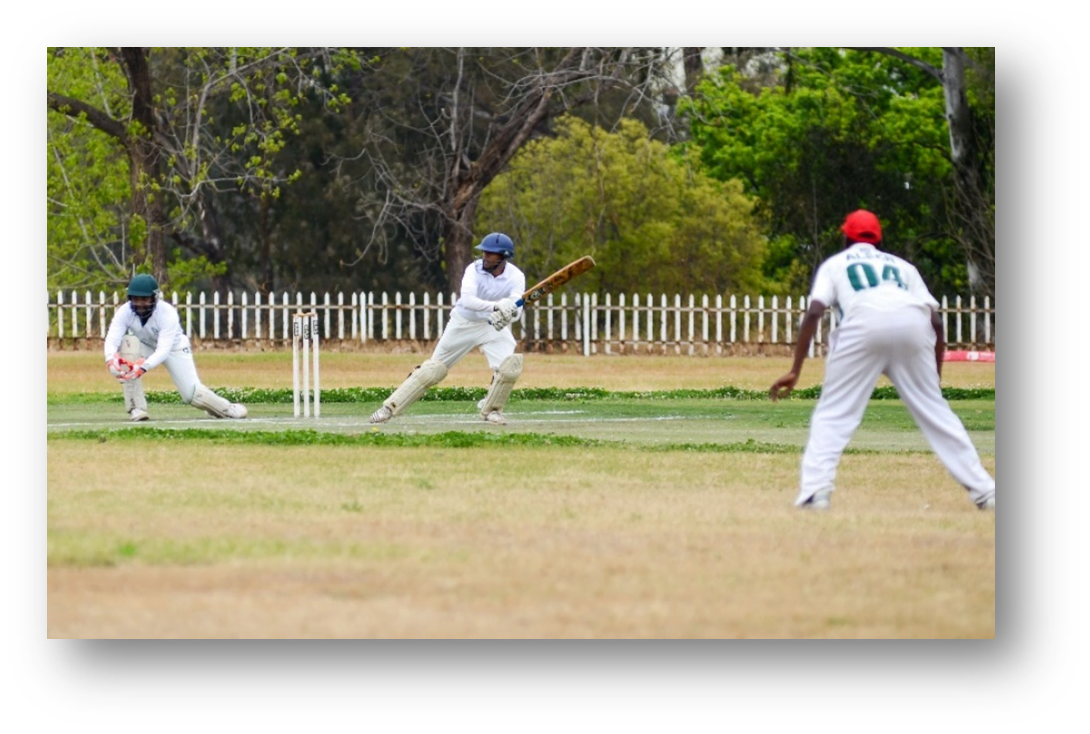Cricket must be played not just following the Laws but also with the Sense of Cricket, which is largely responsible for its attraction and enjoyment. The captains have the primary duty of upholding fair play, but it also falls on all other players, matches officials, and, particularly in junior cricket, instructors, coaches, and parents. There is a total of 42 laws of cricket that are listed by ICC. These laws are followed in every country where cricket is played.
Each of the two teams has a captain and has a total of eleven players. A contest can be played between teams with less or more than 11 players with the agreement, but no more than 11 players can participate at once. The contest must continue as long as permitted by the Laws or any legal agreements before the toss if, during the match, and for any reason, a team is reduced to lesser than the initial amount of nominated players.
Before the toss, each captain must designate his or her teammates in writing to any of the umpires. After the nomination, no player may be removed without the opposing captain's approval. For the sake of these Laws, any substitute player shall be regarded to be the same player as the chosen player he or she replaced. When the player being replaced has finished his or her innings, the substitute is not allowed to bat.
If the captain isn't available, a deputy will take over. Any team member may serve as the captain's substitute to suggest the players if the captain is unavailable. Only a chosen player may serve as the captain's deputy at any time following the selection of the players, including during the toss, by the provisions of these Laws. The captains are always in charge of making sure that play is handled by both the Laws and The Spirit of Cricket.
Before the game, two umpires one for each end shall be chosen to oversee it impartially and per the Laws. At least forty-five minutes before the planned start of each day's play, the umpires must be on the field and submit to the ground executive. The umpires and captains must meet before the toss for them to decide on the match's ball use, playing time, and any agreed-upon intervals' start and end periods. No exact timing for the tea break needs to be agreed upon in a match lasting a single day. It could be decided to use this time instead to rest between innings. The field of play boundary and any allowances for borders, including whether any obstruction inside the field of play is to be treated as a boundary, is to be utilized during the game, together with the clock or watch to be used and a backup timepiece. Everything is decided by the umpires.
The sole authority to determine whether playing would be risky or inappropriate depends on the umpires' collective assessment of the field, the weather, the light, and any unusual circumstances. Just because conditions aren't perfect, it doesn't make them harmful or inappropriate. The ground conditions should not be viewed as inappropriate or unsafe just because the grass, as well as the ball, are moist.
The ground will be deemed to be in such poor condition that it will be dangerous as well as unreasonable to allow play to continue if the umpires believe it to be wet or slippery enough to deny the bowler a sensible foothold, the fielders the ability to move freely, or the batter the capability to engage their strokes or run between the wickets.
The umpires must be positioned such that they can witness every act that calls for a judgment. The bowler's end umpire must stand in a way that doesn't obstruct either the bowler's run-up or the striker's perspective, subject to this paramount concern. If the fielding side captain, the striker, as well as the other umpire are all informed, the striker's end umpire may choose to stand on the off side rather than on side of the field.
On disputed points, communication between the umpires and scorers is crucial. Throughout the whole game, the umpires must be satisfied that the runs scored, wickets were taken, and, if necessary, the number of overs bowled are accurate. They must agree on these matters with the scorers once during each intermission, excluding a drink break, and at the end of the game.
To keep track of the runs scored, wickets taken, and, where necessary, the number of overs bowled, two scorers must be selected. The scorers must regularly verify that their records line up. They must concur with the umpires on the runs scored, the number of wickets that have fallen, and, if necessary, the number of overs bowled at least at every interval (except drinks intervals) and at the end of the game. The umpires' orders and signals must be accepted by the scorers, and they must respond to each indication right away.
All balls that will be used in the game, as selected by the umpires, must be in their possession before even the toss and must be in their possession the whole time. When a wicket is lost, when an interval begins, and whenever play is stopped, the umpire must assume control of the ball that is being used. The Ground Authority is in charge of choosing and preparing the pitch before the game. The umpires are in charge of overseeing its upkeep and use throughout the game.
The pitch cannot be altered in the middle of the game unless the umpires deem it unsafe or inappropriate to continue playing there, and even then, only with both captains' permission. White lines must delineate the locations of a bowling line, a rising crease, and two return creases.
The game will be won by the team that has scored more runs overall than the other team did in its two completed innings. The winner of the game is the team with more runs scored during its one finished innings than the other team's one finished innings.
The captains are in charge of making sure that the game is played by the Cricket Spirit. The only evaluators of fair and unjust play should be the umpires. If an umpire believes that a player's behaviour is unjust and the action isn't covered by the Laws, he or she must signal Dead ball & call it, if necessary, as soon as it is obvious that the non-offending team will not be penalized and report the situation to the opposing umpire.
The ball should be inspected by the umpires often and erratically. They must also check the ball right away if they believe someone is attempting to alter its state. Any player who does something to alter the ball's state is against the rules. A hitter is not permitted to purposefully harm the ball, except when performing his or her regular tasks. However, under the watchful eye of the umpire, a fielder could polish the ball on the surface of his/her clothing as long as no artificial material is utilized, perspiration is the only natural ingredient used, and polishing takes no time at all.
Making a bet on cricket may be enjoyable whether you are an experienced bettor or a beginner. Making sure you are using a licensed bookmaker who is the appropriate one is the first thing you need to do. It is also essential that the sportsbook provide coverage for several cricket competitions, such as the ICC World Cup in all of its variants, among the others mentioned above. Once everything is ready, you may begin wagering on cricket, which comprises forecasting the result of a game or competition. Keep in mind that the types of cricket forecasts you might make rely on the available markets. The operator will assess whether you won or lost after the match by comparing the result to your forecast. If so, they would settle the wager by depositing your profits into your account.












